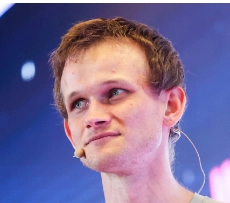- Lack of L2 interoperability has been a bottleneck for seamless user experience and the creation of new decentralised applications
- Following an earlier statement on L2 interoperability issues, Vitalik Buterin highlighted several proposals offering distinct solutions to these challenges.
- Buterin also predicted that all rollups would eventually transition to zero-knowledge (ZK) rollups, though this shift might take over five years.
Layer-2s are designed to bring scalability and high throughput to Ethereum. But as the ecosystem expands and dozens of new Layer-2s are onboarded, the result is often fragmentation and inefficiencies.
This is because each Layer-2 operates independently using asynchronous and proprietary methods. This translates into a lack of coordination, ultimately leading to isolated networks (and a worsened user experience).
What’s more, developers often have a hard time creating applications that can work across multiple L2s, hence the interoperability issue.
Related: ETH Drops 20% as Jump Crypto Liquidates Staked Ether Positions, Blockchain Data Indicates
Advertisement

What are some of the potential solutions and future directions? Well, Vitalik Buterin recently shared several initiatives through an X post on August 6.
The Ethereum co-founder responded to a question about the most promising approaches to solving cross-L2 interoperability challenges, following an earlier statement that issues would soon be resolved.
Buterin proposed several EIP (Ethereum Improvement Proposals) that belong to an extensive roadmap to achieving L2 interoperability. They can be boiled down as follows:
- EIP-3370: Facilitates cross-L2 interactions through a new address standard.
- EIP-7683: liquidity providers enable cross-L2 communication, providing smoother asset transfers between L2s.
- EIP-3668: This framework for off-chain data access would allow L2s to enhance the ability to share information and resources (this would be a form of light client for layer-2s, as Buterin called them).
Overall, the idea is to create a single, standardised method for users to trade assets in multiple networks and allow developers to create applications that can run smoothly in multiple Layer-2s.
Further, Buterin claimed that Layer-2s should have a concept called “cross-L2-replayable account state updates”, which basically means L2s receive the latest state updates from Ethereum, while maintaining security and low latency.
Related: Bitcoin and Ethereum ETFs Flows Suffer Setback Amid Lacklustre Trading Day
Moreover, when asked about how EIPs would work with zero-knowledge (ZK) and optimistic rollups, Buterin claims that all rollups would eventually become ZK-rollups in a period of around five years:
Eventually I think all rollups will go zk (and existing zk rollups will have to redo their tech stack), in order to finalize to ethereum once per slot. But that’s like 5+ years away.
 Vitalik Buterin
Vitalik Buterin




